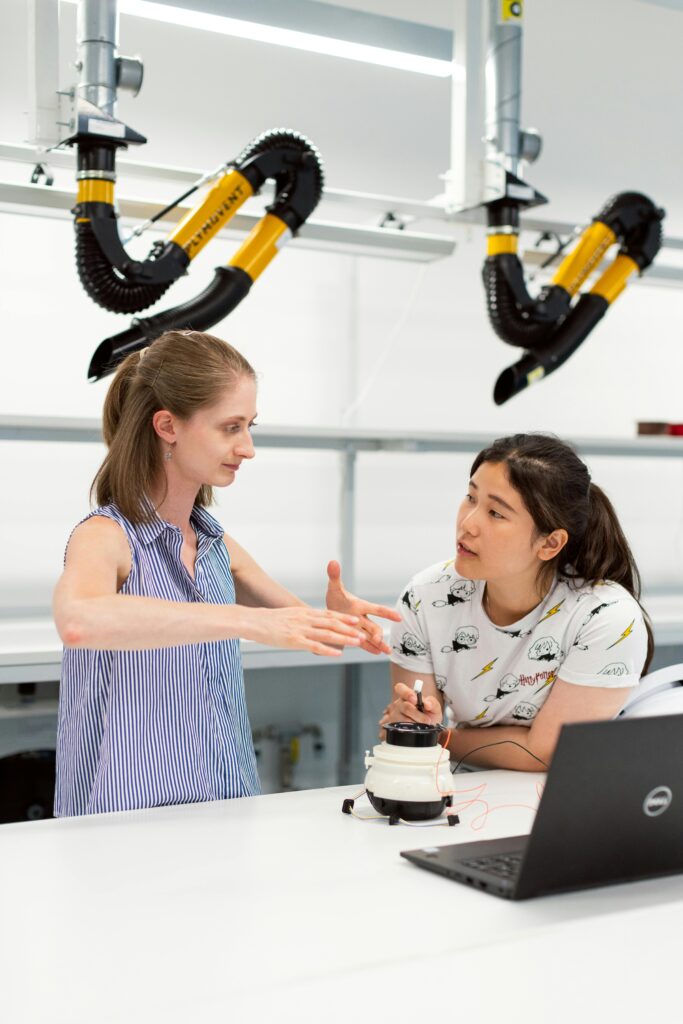Key Takeaways
- Adaptive apparel combines innovative technology with essential comfort and style.
- These garments accommodate the changing needs of diverse consumers, including people with disabilities or those seeking personalized fit.
- Technological advancements such as adaptive fibers play a crucial role in enhancing the functionality and appeal of adaptive clothing.
- Market trends indicate a growing demand for adaptive apparel driven by inclusivity and fashion-forward designs.
Table of Contents
- Introduction
- The Role of Technology in Adaptive Apparel
- Meeting Diverse Consumer Needs
- Balancing Comfort and Style
- Market Trends and Demand
- Future Developments and Innovations
- Final Thoughts
Introduction
Adaptive apparel is revolutionizing the fashion industry by merging cutting-edge technology with the highest levels of comfort and style. These garments are designed to cater to the unique needs of various individuals, making fashion accessible and inclusive for everyone. A significant development in this space is the introduction of advanced lingerie fabric that offers unparalleled adaptability and comfort.
As society moves towards a more inclusive approach to fashion, there is an increasing demand for clothing that looks good and serves practical needs. Adaptive apparel is tailored to meet these requirements, providing bespoke solutions for diverse consumer groups. This movement goes beyond mere aesthetics, aiming to address real functional challenges faced by individuals with disabilities, seniors, and anyone seeking a better fit for their wardrobe.
The importance of this shift cannot be understated. As global populations age and awareness of diverse needs increases, adaptive apparel becomes vital to inclusive design. Brands and designers recognize that clothing should serve as a form of expression and a tool to enhance everyday life.
The Role of Technology in Adaptive Apparel
Technology is at the forefront of adaptive apparel, integrating innovative materials and smart design features. Advanced fabric technologies like adaptive fibers enable these garments to stretch, adjust, and conform to different body shapes, ensuring a personalized fit for each user.
These technological innovations are not limited to the materials themselves. Features such as magnetic closures, adjustable straps, and easy-access openings have transformed the usability of clothing for people with disabilities or limited mobility. Integrating smart textiles that can monitor health metrics or adjust to temperature changes also highlights the future potential of adaptive apparel. These advancements are making everyday tasks easier and enhancing the quality of life for many.
Furthermore, applying technology in adaptive apparel extends to the manufacturing process itself. Advanced techniques such as 3D knitting and seamless stitching create comfortable and durable garments. These methods reduce the likelihood of skin irritation and pressure sores, which is particularly important for individuals with sensitive skin or mobility issues.
Meeting Diverse Consumer Needs
Adaptive apparel meets the requirements of a wide range of consumers, including those with disabilities, seniors, and individuals looking for custom-fitting clothes. These garments’ flexibility and ease of access significantly enhance user experience.
For instance, the elderly, facing challenges such as arthritis or limited dexterity, greatly benefit from adaptive clothing designs that incorporate easy-to-use fastenings. Similarly, people recovering from surgeries or those with chronic conditions find comfort in clothing designed to reduce pressure points and easily slip on and off. This is particularly crucial for maintaining dignity and independence, allowing individuals to dress themselves without assistance.
Additionally, adaptive apparel can also cater to children with sensory processing disorders who may find conventional clothing uncomfortable or distressing. Soft fabrics, flat seams, and tagless designs can make a significant difference in their daily lives, providing them with much-needed comfort.
Balancing Comfort and Style
In addition to functionality, adaptive apparel does not compromise on style. Designers are increasingly focusing on creating aesthetically pleasing garments that are fashionable and comfortable. This balanced approach ensures users feel confident and stylish in their adaptive wear.
Modern adaptive clothing lines are available in various styles, colors, and cuts, proving that functionality doesn’t have to come at the expense of style. This trend makes it easier for people of all abilities to express their personality through fashion. With adaptive designers setting the bar high for form and function, these clothes are becoming mainstream rather than niche, thus encouraging more inclusive fashion choices.
The fashion industry is also seeing the inclusion of adaptive clothing in mainstream collections, with top designers and brands collaborating to create practical and trendy pieces. This positive shift is helping to normalize adaptive apparel, making it a regular feature on runways and in retail stores worldwide.
Market Trends and Demand
The demand for adaptive apparel is growing rapidly, fueled by increasing awareness and the push for inclusivity. Market analysis suggests the adaptive clothing segment will expand significantly in the coming years, driven by the need for accessible and stylish options in the marketplace.
Brands respond to this demand by investing in research and development to create more adaptive clothing lines. This is evident from the increasing number of fashion shows and retail spaces showcasing adaptive apparel. The adaptive clothing market is projected to grow significantly, fulfilling a vital need and setting a trend for future fashion innovation.
Furthermore, social media and influencer marketing are crucial in spreading awareness about adaptive apparel. Influencers and advocates for people with disabilities are using their platforms to highlight the importance and benefits of adaptive clothing, driving consumer interest and demand.
Future Developments and Innovations
The future of adaptive apparel looks promising, with new technologies and materials continually being developed. From incorporating IoT to track health metrics to eco-friendly adaptive fabrics, the industry is poised for exciting advancements.
Environmental sustainability is also becoming a focus area, with brands exploring integrating eco-friendly practices into producing adaptive clothing. As consumers become more conscious of their environmental impact, the shift towards sustainable adaptive apparel will likely gain momentum. Innovations such as biodegradable fibers and waterless dyeing methods are already making their way into the industry, indicating a greener future for adaptive fashion.
Additionally, advancements in wearable technology are expected to play a significant role in the future of adaptive apparel. Smart garments that can monitor vital signs, adjust to environmental changes, and provide therapeutic benefits are on the horizon, promising to elevate the functionality of adaptive clothing even further.
Final Thoughts
Adaptive apparel is more than just a trend; it’s a movement towards greater inclusivity and innovation in fashion. As technology and design evolve, adaptive clothing will likely become a staple in everyone’s wardrobe, providing unparalleled comfort and style. By addressing the unique needs of consumers and leveraging advanced technologies, the adaptive apparel industry is setting new standards for functional and fashionable clothing.
As the fashion industry embraces inclusivity and innovation, adaptive apparel represents a significant step forward. It’s a testament to what can be achieved when technology, design, and empathy create products that make a real difference in people’s lives. The future looks bright for adaptive fashion, promising a world where everyone can look and feel their best, regardless of individual needs.

